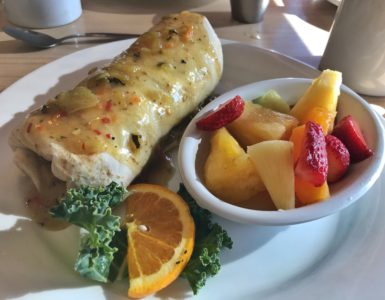I’ve a tendency to adopt things enthusiastically and grow bored with them later. This is especially true with diets.
Remember low carb? I bought all the books, all the low-carb food, all the carb-counting books … and then, after losing five or ten pounds, I discovered I just didn’t want to live a low carb life. Enthusiasm gave way to meal time boredom … and soon, I was back to bread and pasta and fruit galore. (I gotta confess, too, that any diet that rules out entire classes of foods — especially those that have been staples of life for centuries — strikes me as more than a little extreme.)
Remember Power 90? I was very much into it, from taking the embarassing before and after photos right down to putting in my obligatory exercise sessions every morning. I lost weight and made progress — but, in the end, I hated the exercise sessions, which struck me as boring and repetitive. I was never much for their creepy diet plan, either.
I’ve counted calories. I’ve gone no-fat and low-fat. I’ve even tried drugs like Topamax.
None of these, however, speak to the heart of my struggle to control my weight — the real issue behind the pounds. For me, weight control really is about willpower: tuning into my own personal ability to say, “Eating this cup of Bop’s Frozen Custard is not in line with my personal goals.”
They say that, when the student is ready, the teacher appears. About two weeks ago, having reached my most massive weight ever, I came across the so-called “No S Diet.”
There are no calories to count. There are no fat grams to calculate. There are no Atkins-style forbiden foods. There’s no witchcraft (no nonsense about eating certain foods only in certain combinations). There’s no appeal to gluttony (“Eat as much as you like, as long as your meal doesn’t last longer than one hour!”).
The system is simple:
1. No snacks
2. No seconds
3. No sweets
except (sometimes) on days that start with S — Saturday, Sunday, and Special days (like birthdays or holidays).
It’s that simple.
The creator of the diet — a computer programmer, not a nutritionist — wanted something simple and straightforward. The No S Diet, in fact, really isn’t a diet so much as a way of scaling your choices so that occasional indulgences don’t kill your progress.
The creator admits the biggest problem with the diet isn’t sticking to it — it’s the fact you can’t make a best-selling diet book out of advice that simple. (On the other hand, as he points out, “You wouldn’t take diet advice from a fat person … so why do you want diet advice from a fat book?”)
The No S Diet is something I can do. I eat the foods I want to eat. I have no trouble waiting for my weekend treats. And on the weekends, having arrested the gorging impulse during the week, I find myself seeking out small, incredible treats instead of packing down a pound bag of nasty peanut M&M’s at a time.
The diet isn’t scaled for quick weight-loss, but for gradual dwindling over time. In the first week, I pulled ahead of the curve, losing 2.5 pounds. Clyde lost a pound. (This morning, 1.5 weeks into the program, he proudly announced he joined the “Two Pound Club.”)
Stunning weight loss? Nope. Headed down instead of up? Yep. And, frankly, as someone who really can (and often did) put away a bag of Chocolate Creme Oreos, a creamy frozen coffee drink, two large peanut butter cookies, several Cokes, and assorted ooey gooey treats between meals almost every day … cutting out the snackage is going to do me a lot of good.
(About snacks: if you get really hungry — and what’s wrong, by the way, with being a little hungry now and then? — a handful of nuts, some fruit, or a veggie will do the trick. I used to grab a cookie; now, I’m shocked at how yummy a slice of tomato can be.)
Time will tell … but at this point, the No S diet strikes me as something I can actually live with and benefit from. For details (and answers to the inevitable questions), see the No S Diet Website.



Add comment